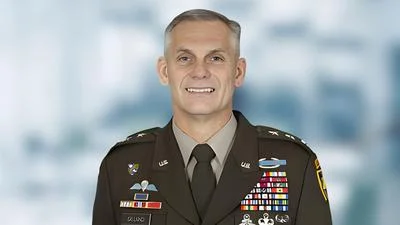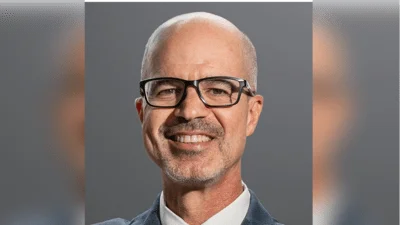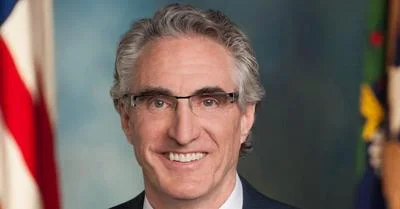The Congressional Record is a unique source of public documentation. It started in 1873, documenting nearly all the major and minor policies being discussed and debated.
“THE ED ROBERTS CAMPUS” mentioning the U.S. Dept of State was published in the Extensions of Remarks section on pages E183-E185 on Feb. 11, 2003.
The publication is reproduced in full below:
THE ED ROBERTS CAMPUS
______
HON. BARBARA LEE
of california
in the house of representatives
Tuesday, February 11, 2003
Ms. LEE. Mr. Speaker, I am pleased to place in the Record this important article from the January 28, 2003 Washington Post. This article provides an excellent description of the importance of independent living for people with disabilities and the challenges they face in securing the independence they seek. Too often people with disabilities, like Mr. Schneider who is featured in the article, find independence an uphill battle--not because of their disabilities, but because of government policies that promote dependence and institutionalization.
I was particularly pleased to see that one of my constituents who passed away in 1995, is featured in this article. Ed Roberts was the original barrier buster! Living in an iron lung, Ed enrolled at the University of California at Berkeley in the 1960's and went on to become the state director of vocation rehabilitation for the State of California. Ed helped found the Berkeley Center for Independent Living--a center that served as the model for centers across the country that are now funded by the federal government to support the independence of people with disabilities.
Berkeley is the heart and soul of the disability rights movement as evidenced by Ed's legacy and the many vibrant disability organizations that continue to operate there today. In honor of Ed and his legacy, nine of these organizations have come together to create the Ed Roberts Campus. This important facility will be built at the BART Ashby stop. It will serve as a transit-friendly center in which people with disabilities can meet their own needs for advocacy, training, and independence and can actively participate in a movement that promotes their full integration into society.
The Ed Roberts Campus will serve as a national and international model of independence for people with disabilities. The nine organizations that make up the Ed Roberts Campus are the Bay Area Outreach and Recreation Program, the Center for Accessible Technology, the Center for Independent Living, Computer Technologies Program, Disability Rights Advocates, Disability Rights Education and Defense Fund, Through the Looking Glass, Whirlwind Wheelchair International and the World Institute on Disability.
I urge my colleagues to join me in supporting the creation of this important campus that celebrates the independence of people with disabilities and honors the legacy of a great man who led the way for so many of us--Ed Roberts.
Independent Living's Real Costs
(By Susan DeFord)
Going to bed is one of Richard Schneider's daily accomplishments.
With the movement he retains in his right arm and fingers, Schneider each evening turns the radio to softly playing jazz and guides his motorized wheelchair next to his bed. Morita, his black cat, looks on.
Schneider reaches up for a black remote control hanging by a cord from a motor that rides on a ceiling-mounted metal track. A metal clasp dangles from the device, and he hooks this onto the catch of a lightweight fabric sling he wears like a vest. With the remote control he operates the motor to lift himself in the sling out of his wheelchair and onto his bed. The maneuver ends as Schneider pulls up the bed covers up with a clawlike wooden stick. The whole process takes about half an hour.
Schneider, a 58-year-old retired research scientist, sums up his achievement simply: ``I can go to bed when I want to go to bed.''
Schneider lives on his own despite the effects of multiple sclerosis, an incurable, degenerative disease of the nervous system that over three decades has robbed him of movement in his legs, torso and left arm. He has never lived in a nursing facility, and now makes his home in the remodeled basement of a ranch house he purchased in 2001 in a semi-rural stretch of southern Howard County.
``Having other people do things I can do myself is not the way I want to live,'' said Schneider.
An array of social and technological improvements has sustained Schneider as his MS has advanced. Increasingly, people with severe disabilities are pursuing ways to avoid institutional care or the constant presence of a human caretaker.
That strategy ``is eminently feasible,'' said Michael Dalto, administrator of Maryland's assistive technology program, which in four years has made 197 loans for equipment such as hospital beds, special computer keyboards and accessible vans, ``It's beginning to happen more and more.''
Independence advocates argue that federal and state governments should put more money into getting the disabled out of institutions, where an estimated 2.1 million reside, according to a five-year-old estimate from the San Francisco-based Disability Statistics Center. (More recent figures are hard to come by; the Bureau of the Census, for example, doesn't report the number of disabled people living in nursing homes or group homes.)
More than 80 percent of Medicaid money spent annually on long-term care goes to institutions, with community and at-home services getting the remaining 20 percent, according to advocates. They want federal legislation to let people with disabilities decide where they will receive government-funded services, rather than having the government direct most of its money for assistance to institutions.
``It's what most people want and what costs [government] the least,'' said Gayle Hafner, a staff attorney with the Maryland Disability Law Center.
But for Schneider, the struggle to stay independent is ever-present, in his complicated physical needs, in his face-offs with health care bureaucrats, in the simple frustration of dropping a book and not being able to pick it up. And with no spouse or family close by, independence sometimes feels like isolation.
``I'm living close to the edge,'' Schneider said.
Born in the '60s
The notion that the disabled could live independently emerged at the University of California in the political ferment of the 1960s, and one of its principal proponents was a student who spent most of his days in an iron lung. Ed Roberts went on to become the director of a state agency in California and founded a disability think tank before his death in 1995. But he got his start organizing the Berkeley Center for Independent Living. That was the precursor of 450 centers throughout the United States and its territories that aim to make communities more accessible and give people with disabilities the power to make their own decisions.
``People with disabilities have the right to live in their own homes, achieving their independence just like everyone else,'' said Jamey George, executive director of the Freedom Center, a Frederick-based agency. Like other independent living centers, the Freedom Center offers people with disabilities peer support and referrals and prods government agencies for more community-based services.
This approach was just getting its start in 1971 when Schneider first noticed a needle-like tingling in his legs and had an episode of blurred vision.
Schneider, a promising doctoral candidate at the University of Pittsburgh, was distraught when he received his diagnosis of MS, and bewildered family members asked if he would get better.
``I knew what that meant for my life,'' said Schneider.
More than 30 years later, he's strapped into his wheelchair to control involuntary muscle spasms, a plastic bag draped on his lap to collect urine through a catheter, and his feet swathed in foam padding to keep his skin from disintegrating into bedsores. He takes seven medications daily, he wears a 24-hour emergency response necklace, and he's been hospitalized 22 times.
Physical therapy after one hospitalization a few years back got Schneider momentarily standing upright. It brought tears of joy to his eyes.
There's no cure for MS, which causes the body's immune system to erode the fatty sheath of myelin around nervous system fibers, impairing the transmission of impulses to muscles and other organs. Since Schneider's diagnosis, drugs have emerged to slow the disease's interference with the body's immune system.
Though neurologists initially offered Schneider little in the way of treatment, they told him to get on with his life, that it would be years before the disease's symptoms became severe.
Schneider adjusted, finished his doctorate and launched a research career in neurobiology at the University of Maryland Medical School in Baltimore. A photograph of him from those days shows him leaning slightly as he stands in a white lab coat and bow tie, a solemn expression in his deep-set eyes. He was intent on his investigation of the body's sensory detection system, mindful that the clock was ticking. Over the course of a decade, he went from occasional awkwardness in walking to using a cane and crutches, then a motorized scooter. He retired on disability in 1981, but continued his research in the 1980s as a guest worker with the National Institute of Mental Health in Bethesda and at universities in Montreal. In late 1992, he developed a contracture in his right leg, and it bent permanently as muscles locked into place. With the contracture and growing loss of strength in his upper body, it became increasingly difficult for Schneider to move on and off the stair glide in his three-story Columbia townhouse.
At this point, Schneider contemplated a move to a nursing facility, and his top pick was Inglis House in Philadelphia, a 125-year-old institution that cares for the severely disabled and draws many younger residents to its self-described ``wheelchair community,'' But administrators acknowledged that Inglis House would be a bad fit for Schneider, a man who invests online, who has his computer speak to him in a sultry feminine German voice and who's written a work of fiction about people with disabilities.
``Intellectually, it would be hell for me, and I do have an intellectual life,'' said Schneider, who was told during a visit that Inglis House couldn't accommodate his computer in his room.
In 1995, Schneider teamed up with his Howard County friend Maria Turley, who also had MS and wanted to stay out of a nursing facility. Turley, who died last year, approached her pastor and members of her church, the Orthodox Church of St. Matthew. A group formed to build St. Matthew House, an accessible home with suites for 15 disabled people that opened in Columbia in 1999. But while Turley moved in, Schneider couldn't, because his pension and Social Security disability payments, then totaling about $22,000 annually, put him just beyond income limits for the federally subsidized facility. ``It was a disappointment,'' Schneider said. ``I felt rejected.''
Independence Day
While he pursued different housing options, Schneider hired personal care attendants and turned to assistive technology.
``The technological revolution is getting better every day,'' said Brewster Thackeray, a spokesman for the National Organization on Disability. For example, he said, his boss, a quadriplegic, can use voice-activated devices to dial a telephone, open files on his computer and compose memos.
``The tragedy is, the technology exists, but people with disabilities may not have access to it,'' said Thackeray. He referred to his organization's 2000 national survey, which showed that only 32 percent of people with disabilities aged 18 to 64 are employed full or part time, and that 29 percent of people with disabilities live in poverty, with a household income of $15,000 or less.
Schneider considers his ceiling-mounted lift the most important device he has to independently perform mundane daily tasks such as using the toilet. But in 1995 he lost his argument to have Medicare pay for the approximately $6,000 lift and used his own money. Medicare regards the device as a
``convenience item'' that doesn't fit its definition of medical equipment, according to an e-mailed explanation from a spokesperson with the Centers for Medicare and Medicaid Services.
Schneider faced more discouragement in 2000 and 2001, when he tried to get government assistance to install an elevator in his Columbia townhouse. Local government and social service officials offered little hope, and one wrote Schneider suggesting that he and his neighbors hold a bake sale to raise the money. But independent living advocates such as Jamey George insisted the state could help with low-interest loans. Schneider decided to sell his townhouse and buy a home that could be remodeled to accommodate several friends with MS who lived in nursing facilities.
``I wanted to have a home for a group of people who are disabled,'' Schneider said. He believed a new law in Maryland would make it easier, since it required state agencies to get more services to disabled adults in community settings, rather than institutions. He still rankles at the reaction of one state rehabilitation official, who told him he wasn't competent to run such a home.
Schneider persevered, but it wasn't long before he was struggling with misfiled loan applications, climbing remodeling expenses and ballooning debt. That's when his cyber community stepped into the fray. Schneider administers an online forum and support group for MS patients called MedSupport that draws participants from 12 countries and is an example of how the Internet has forged new ties among people with disabilities. One participant is Kimberly Hensel, a woman with severe MS who lives in a small, isolated Arizona town. Hensel's disease garbles her speech, but she can communicate online by typing in a personalized shorthand with one index finger: ``most folks ive come n contact w over the internet hav the desire 2 keep adaptn 2 their changn needs 2 b as independent as we can,'' she e-mailed. ``often we need a little help 2 enable us 2 do just that.'' MedSupport members began sending hundreds of e-mails to the Maryland governor's office asking for its intervention in Schneider's case.
The office of Rep. Benjamin L. Cardin (D-Md.) also got involved, arguing that state officials could choose between loaning Schneider money or spending tens of thousands of dollars annually--in Maryland the average annual cost is
$50,000--to keep him in a nursing home.
The bureaucrats relented, and last year Schneider got two loans totaling $65,000 to cover the cost of the $48,000 elevator and some of the remodeling. His ranch home now has wide, sloping concrete walks from his front and back doors that draw him outside even on wintry days. His basement quarters feature a bathroom with a roll-in shower, a toilet with double grab bars and electronic sensing devices, kitchen cabinets that accommodate his wheelchair, and appliances installed so that he can reach into them from his wheelchair.
But he ran out of money to remodel the bathroom on the main floor and widen the hallways. The new elevator sits little used. The home for his MS friends hasn't happened, and Schneider rents out the first floor to an able-bodied tenant.
His correspondence with the state Department of Health and Mental Hygiene has convinced him that the state would try to make him comply with elaborate licensure and certification rules for what it calls his ``residential facility.''
``If the health care bureaucracy isn't attuned to working with people with disabilities, it doesn't matter what the words of the law are,'' he said.
Recently, Schneider hired two exercise therapists, who came to his house for several weeks of half-hour sessions. They had him do reps with four-pound weights on his good right arm, and worked with his left arm and legs as well, under the theory that repeated movement might invigorate his damaged nervous system.
Schneider also has his longtime personal attendants help him do stretching exercises with his left arm to keep the muscles from permanently contracting. During one visit, he grimaced as attendant Oretha Solee slowly pulled his extended arm out and behind his back.
``That's good, that's enough,'' he whispered.
Someday, Schneider says, there may be a medical breakthrough in MS, and he wants to remain as limber as he can be. In the meantime, he receives calls from health care bureaucrats who want to update their records and ask if he still has MS. Yes, he tells them, and he recounts the conversations with sardonic resignation. He has learned to live with it.
____________________








